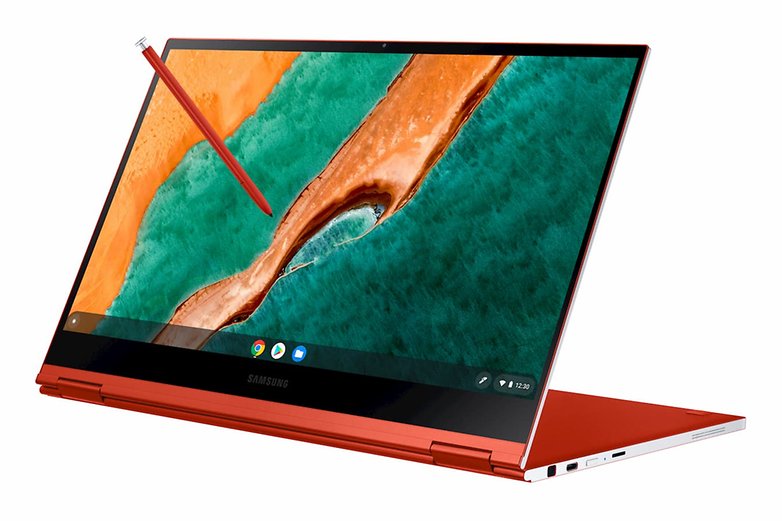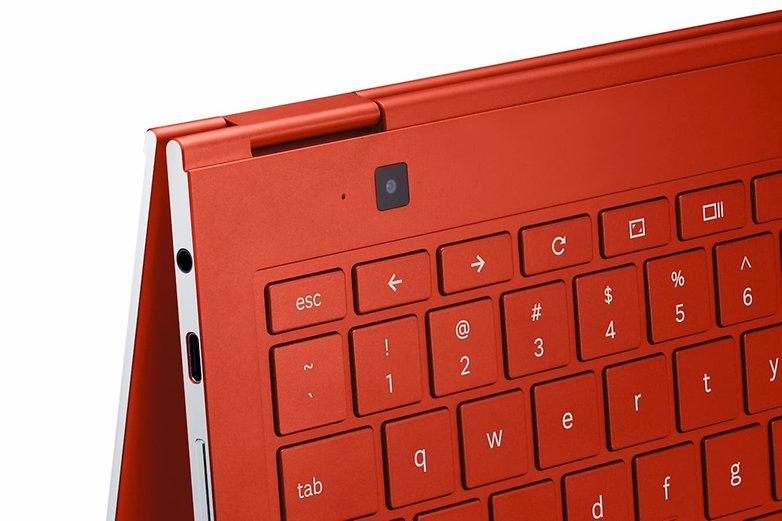The new Galaxy Chromebook is Samsung's answer to Google's Pixelbook


Today at CES 2020 in Las Vegas, Samsung introduced the world to the Galaxy Chromebook. The premium 2-in-1 appears to be looking to fill a huge Pixelbook 2-shaped hole in the high-performance Chromebook market. Here are all the details.
There is no doubting that the new Galaxy Chromebook is pretty. It's also powerful. But priced at $999, Samsung is taking a gamble here that there really is a demand for premium Chrome OS notebooks that cost as much as a really good Windows laptop, or MacBook Air.
Design and display
As the thinnest Samsung Chromebook ever released, the Galaxy Book combines the best of Samsung technical innovation. As you would expect from the South Korean company, the display is impressive. It's a 13-3-inch 4K AMOLED (3840x2160) touch screen in 16:9. The bezels are tiny at 3.9mm and it promises to offer true-to-life visuals for gaming, crystal-clear photo viewing, and editing. Remember, you won't be able to full desktop apps on this though. Samsung also said that the Galaxy Chromebook will soon come with HDR400 to deliver high-contrast graphics, along with Ambient EQ capabilities.

There's also built-in-pen support, offering users new ways to take advantage of the Chrome OS experience in the same way that you would a Galaxy Note 10 Plus, for example. The whole notebook is just 9.9mm thick, and it is made from aluminum. There's a fingerprint sensor for unlocking, two USB-C ports and an 8-megapixel camera on the keyboard deck. Two 2W speakers provide stereo sound.
Performance and memory
On the performance side, Samsung has gone about as high-end as you we've seen for a Chromebook. The Galaxy Chromebook is powered by the latest 10th Gen Intel Core i5 processor and there's up to 16GB of RAM available. For internal storage, you can have up to 1TB of SSD space, and there's expandable storage via microSD. It should be said though that the $999 version comes with 8GB of RAM and 128GB of internal storage though. There's also Intel Wi-Fi 6 in there, so that your internet connection remains smooth and uninterrupted.

The Galaxy Chromebook was co-engineered with Intel as part of the Project Athena innovation program. Samsung says it has passed rigorous testing to achieve the program’s experience targets and hardware specifications, ensuring it consistently delivers the responsiveness, instant wake, and battery life that ambitious people need to focus from anywhere. The battery is a 49.2Wh and should provide around eight hours of continuous use.
Chrome OS can run Android apps, of course, and has been a success in the educational market and for those who just want a cheap, fast, internet browsing machine. But as impressive as Google's Pixelbook hardware is, the premium thousand-dollar Chromebook market hasn't really gotten going. Can Samsung's Galaxy Chromebook change that?
"For years, students have come to love Chrome OS in classrooms around the world - but today, Chromebooks are being used for so much more, by the younger generation and working-professionals alike," said Kan Liu, Senior Director of Product Management at Google. "As we see the demand for premium Chromebook experiences rise, we are investing more and more with partners like Samsung to build the next generation of flagship Chromebook product innovations and offerings."
Galaxy Chromebook will be available in Fiesta Red and Mercury Gray in Q1 2020, starting at $999.99.












-
Admin
Jan 8, 2020 Link to commentWay too expensive